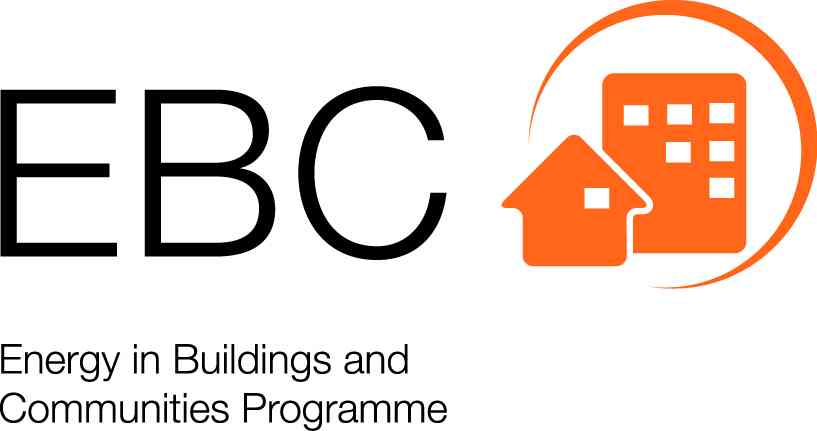3. Executive Summary¶
The IEA EBC project Annex 60: New Generation Computational Tools for Building & Community Energy Systems led to open-source, freely available, documented, validated and verified new generation computational tools. These tools allow buildings and community energy grids to be designed and operated as integrated, robust, performance based systems with low energy use and low peak power demand. The developed tools are all based on three non-proprietary, open standards:
- The Modelica modeling language for implemeting models (https://www.modelica.org/),
- the Functional Mockup Interface (FMI) standards to couple simulators (https://www.fmi-standard.org/), and
- the Industry Foundation Classes (IFC) for building information modeling (http://www.buildingsmart-tech.org/) as well as other BIM-related standards such as Information Delivery Manual (IDM) and Model View Definitions (MVD).
Thus, Annex 60 committed to, leveraged and contributed to open standards that can be used with a variety of tools, rather than developed software technology that depends on the implementation of a single tool provider. This avoids vendor lock-in and provides to industry a stable basis, governed by standards, to invest in.
The target audience of Annex 60 is the building energy research community, design firms and energy service companies, equipment and tool manufacturers, as well as students in building energy-related sciences. Through Annex 60, fragmented duplicative activities in modeling, simulation and optimization of building and community energy systems that are based on the Modelica and FMI standards were coordinated. Tool-chains were created, often by adapting and extending technologies from other industry sectors, to link Building Information Models (BIM) to energy modeling, building simulation to controls design tools, and design tools to operational tools. These tools were demonstrated for building design, district energy system design, and for use of models during operation to support fault detection and diagnostics algorithms, model predictive control, and hardware-in-the-loop experimentation.
Annex 60 was organized in the subtasks and activities shown in Fig. 3.1. Subtasks 1 developed and implemented the software technology required by the applications. Subtask 2 was focused on validation, verification and demonstration of the developed software technology for building and community energy system design and operation. Subtask 3 was focused on dissemination of the results through special tracks at professional conferences, through training workshops and through publications in international scientific journals.
Subtasks 1 and 2 consisted of the following activities:
Subtask 1 - Technology Development
Activity 1.1 Modelica model libraries, developed a free open-source
library with more than 300 Modelica models for building and community energy systems, available at https://github.com/iea-annex60/modelica-annex60/releases.
This library became the core of the four Modelica libraries
AixLib, developed by RWTH Aachen, Germany,
BuildingsSystems, developed by UdK Berlin, Germany,
Buildings, developed by Lawrence Berkeley National Laboratory, Berkeley, CA, USA, and
IDEAS, developed by KU Leuven, Belgium.
Prior to the Annex, theses libraries had
limited scope, were mutually incompatible, and in some cases not available to the public.
Activity 1.2 Co-simulation and model exchange through Functional Mockup Units, developed co-simulation and model-exchange interfaces in legacy building energy simulation programs and further developed middle-ware for co-simulation and model exchange. All work was based on the non-proprietary Functional Mockup Interface standard.
Activity 1.3 Building Information Models, developed BIM to Modelica translators. This was accomplished through the use and extension of the Open BIM data formats defined by the Industry Foundation Classes (IFC) and through the use of other BIM-standards such as the Information Delivery Manual (IDM) and through Model View Definitions (MVD).
Activity 1.4 Workflow automation tools, developed free open-source Python packages to automate the workflow of developing and using Modelica models.
Subtask 2 - Validation and Demonstration
Activity 2.1 Design of building systems, demonstrated how to design energy and control systems for buildings and how to size systems under consideration of diurnal weather patterns, energy storage and time-varying electricity prices of a smart grid.
Activity 2.2 Design of district energy systems, validated and demonstrated the tools from Subtask 1, applied to district energy systems and smart grid integration at the scale of the district energy system.
Activity 2.3 Model use during operation, used control models from Activity 1.1 and FMI export programs from Activity 1.2 during the operation of building energy systems, and during hardware-in-the-loop experimentation.
Subtask 3 - Dissemination
Subtask 3, which is not described in this report, focused on the dissemination of the results through special sessions at scientific conferences and through workshops that trained users in the technology developed in Annex 60. Results have further been disseminated through publication in international scientific journals.
Annex 60 was conducted from June 2012 to June 2017. The core of the team will continue key developments and disseminations of Annex 60 under the umbrella of the International Building Performance Simulation Association (IBPSA). This will be the first research project formally conducted under the umbrella of IBPSA, executed as “Project 1: BIM/GIS and Modelica Framework for building and community energy system design and operation.”
